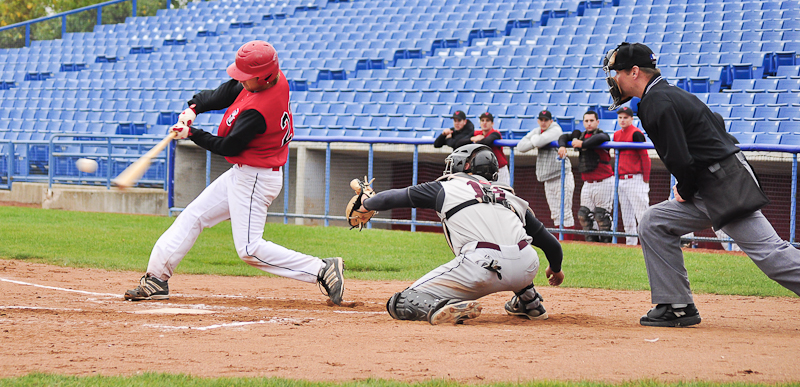Despite looming concerns over a second wave of COVID-19, the majority of professional sports leagues are beginning to plan a comeback.
In an effort to resume the season, Major League Baseball (MLB) implemented rules to reduce the spread of the virus. Players are not allowed to hug, fist-bump, high-five, fight, argue with the umpire or with the other team.
Players also must retrieve their own equipment from the dug-out, the exchange of line-up cards will be done online, pitchers can bring rags for moisture to avoid licking their fingers and players are strongly discouraged from throwing the ball around the infield after an out, among other new safety measures.
Even with new safety measures, some players such as pitcher David Price of the Los Angeles Dodgers, have opted out of the 2020 season due to COVID-19 concerns. With all these changes, players and fans are asking whether these new regulations are enough to decrease or eliminate the spread of COVID-19, and can university sports implement similar regulations to restart seasons in the fall just like the pros?

The big leagues
MLB teams will travel all over the United States and play games against several opponents from their division and a few others. This is unlike the National Hockey League (NHL) and National Basketball Association (NBA), which have chosen a select few hub cities that would largely eliminate the need to travel in order to play.
The Toronto Blue Jays are going to be travelling frequently to and from the United States, and according to Global News already 31 players and seven staff members have tested positive for COVID-19. Even without fans, the players are still at risk of contracting the virus due to travel and being in contact with other players who may currently have the disease.
As of July 6, the Centers for Disease Control and Prevention reported the United States has nearly 2.9 million confirmed COVID-19 cases, which is the highest in the world, as well as more deaths (almost 130,000) than any other country. There are some states with more cases and deaths than others, but the hardest-hit states include New York, Florida, California, Texas, and Illinois. All of these states have a baseball team.
Florida has two MLB teams and all of their opponents would come into contact with many people at the ball-park and hotels there.
With constant travelling to and from cities that have many confirmed cases, it is risky to resume the season. The MLB plans to combat the spread of the disease with not only their new on-field rules, but also with increased testing.
All players will be tested every other day during the regular season, players and staff will undergo symptom screenings twice a day during the season, and free diagnostic tests will be offered to the players’ family members and healthcare workers in the club’s home cities.
In addition to testing, everyone must wear a face mask at stadiums unless they are playing or practising, players and coaching staff can wear masks during games, and players are prohibited from using public transportation.
If a player does test positive with COVID-19, they are not allowed to travel with the team, they do not have access to the team facility and cannot be in contact with anyone — not even family — until they recover. To return, they must test negative twice in a row, have no fever for 72 hours, and be deemed safe by team doctors.

Expert weighs in
Scott Mitchell, an instructor at Carleton’s School of Journalism and an expert in risk perception, behaviour, and crisis communication said that the return of sports is risky.
“If people are in close contact with each other for a sustained period of time, even wearing masks and avoiding physical contact might not be enough to prevent the spread of the virus,” Mitchell explained.
“A mask might stop you from spreading the virus to others who you pass in the grocery store, but if you’re close to other people for prolonged amounts of time, there’s still a risk of transmission.”
He added that in an ideal world, everyone would stay home, avoid large gatherings and minimize public appearances. However, “real life” has to go on. People are going back to work, and school boards and universities are also making plans to return while ensuring everyone’s safety.
“Recently, the MLB and MLBPA [Major League Baseball Players’ Association] have announced that a number of different clubs have had one or more individuals test positive … People need some entertainment, but safety should obviously be the priority and we can’t risk creating ‘super-spreader’ events,” he said.
Jennifer Brenning, Carleton Athletics director, said the university is complying with public health directives by cancelling university competition until at least Dec. 31, although a decision has yet to be made for the winter term.
“When university sports do return, there will likely be similar regulations as they have in the professional leagues,” Brenning said.
She added this could mean that there will be lots of testing, limited contact when possible, and teams will minimize travel and self-isolate to reduce the spread. If a player contracts the virus, they will not be allowed to play, train or travel with the team.
Will these measures be enough to stop the spread? No safety measures are as good as isolation, Mitchell said.
“Mandatory mask-wearing, physical distancing, extensive testing and screening, and other measures [like no fans in the stadiums] can certainly help,” Mitchell explained. “But we have to think about whether it’s even really possible to safely have a sporting event somewhere like, for example, Florida, where we’re seeing 10,000+ cases every day.”
“The answer, for safety’s sake, is probably no,” he added.
Featured image from file.






